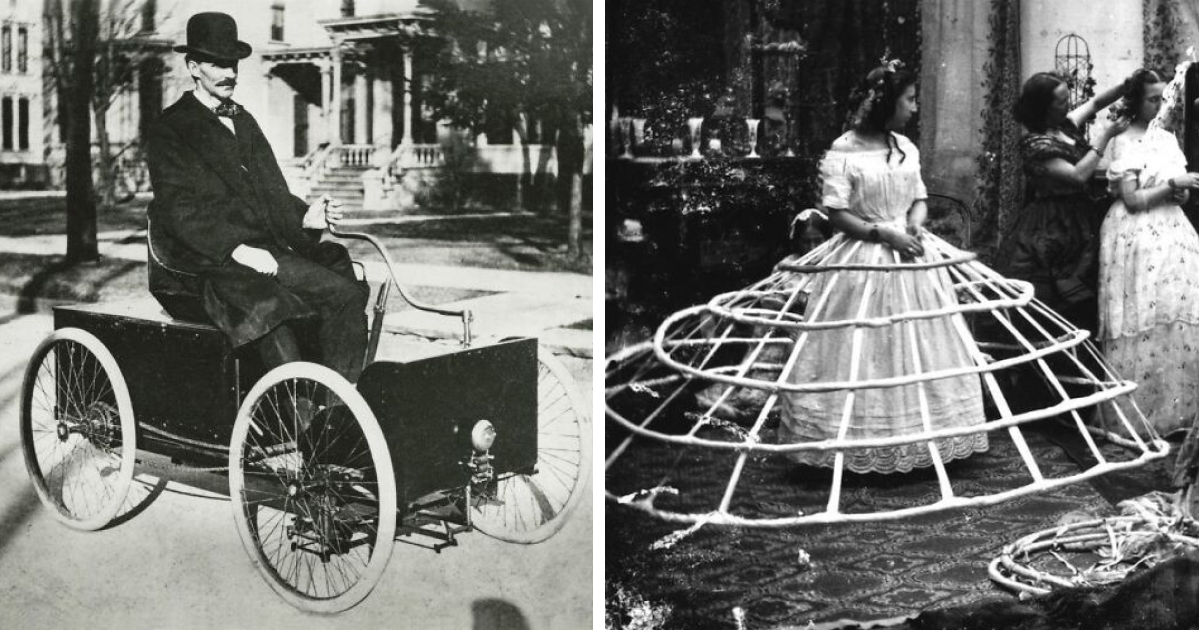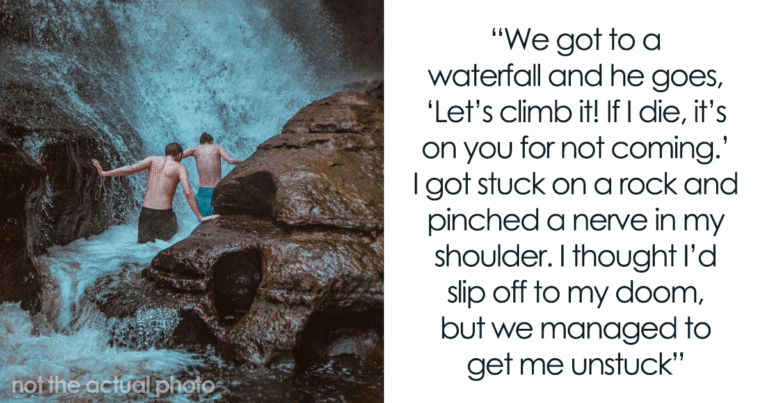30 Gripping Pictures That Tell The Real Story Of 1800s America
The 1800s were a century of incredible transformation for America but not all of it was pretty. These 34 photographs capture a nation growing up fast, from the early days of our democracy to the dawn of the industrial age. You’ll see images that might make you uncomfortable alongside others that fill you with pride, because that’s exactly what this era was: complicated, messy, and real. From Native American communities fighting for survival to waves of immigrants seeking new lives at Ellis Island, from the harsh realities of plantation life to the bustling energy of Wall Street, these pictures don’t sugarcoat history. They show us America as it actually was: a young country figuring itself out, making terrible mistakes and remarkable progress, often at the same time.
if (!BoredPanda.Config.isTabletWidth) {
if (BoredPanda.Config.departments.includes(‘main-editorial’)) {
pdID = BoredPanda.Config.experimentVariation < 2 ? 118361 : 118363;
} else if (BoredPanda.Config.departments.includes('news')) {
pdID = BoredPanda.Config.experimentVariation < 2 ? 117965 : 117967;
} else {
pdID = BoredPanda.Config.experimentVariation < 2 ? 116845 : 120299;
}
} else if (BoredPanda.Config.isTabletWidth) {
if (BoredPanda.Config.departments.includes('main-editorial')) {
pdID = BoredPanda.Config.experimentVariation < 2 ? 118540 : 118541;
} else if (BoredPanda.Config.departments.includes('news')) {
pdID = BoredPanda.Config.experimentVariation < 2 ? 118537 : 118538;
} else {
pdID = BoredPanda.Config.experimentVariation < 2 ? 118535 : 120301;
}
}
if (BoredPanda.Config.bpVersion === 'news') {
pdID = 119689;
}
trfData = BoredPanda.TrafficSources.getData();
_subIdParts = [
BoredPanda.Config.postId,
BoredPanda.Config.pos.filter((t) => !t.includes('_')).join('_'),
trfData.source.replace(',', '').substr(0, 20),
trfData.medium.replace(',', '').substr(0, 20),
trfData.campaign.replace(',', '').substr(0, 20),
];
subId = _subIdParts.join(',');
if (!BoredPanda.Config.isMobileWidth) {
(function (d, s, b) {
var mElmt, primisElmt = d.createElement('script');
primisElmt.setAttribute('type', 'text/javascript');
primisElmt.setAttribute('async', 'async');
primisElmt.setAttribute('src', s);
var elmtInterval = setInterval(function () {
mElmt = d.getElementById(b);
if (mElmt) {
mElmt.parentNode.insertBefore(primisElmt, mElmt.nextSibling);
mElmt.parentNode.removeChild(mElmt);
return clearInterval(elmtInterval);
}
}, 20);
})(document, 'https://live.primis.tech/live/liveView.php?s=' + pdID + '&subId=' + subId + '&playerApiId=bpbase_desktop', 'desktop-widget-loaded');
}
#7
International Council Of Women, 1888
The international council of women became the first organization of women to promote the advancement of women’s rights and equality. Emerged from the growing discourse around gender- based injustice that was prevalent in the later part of the 19th century.
#8
The First Automobile Comes To Town! 1896
Henry Ford drives his first automobile. By the late 1800’s, people had traveled by wagon, stagecoach, train, bicycle, horseback and trolley. Automobiles had not yet been invented until Henry for created the quadricycle, his first attempt at a vehicle that was gas powered. It was constructed of cast iron for ther outer body and a leather belt and chairn for a transmission.
#10
“Nomads Of The Street”, Street Children In Their Sleeping Quarters, New York, 1890s
In the late 19th century, there were a large number of homeless children on the streets of New York. Some of the children who lived in the streets had homes, but preferred to sleep on the street, as their tenements were often too small, unsanitary, or overcrowded.
#11
Bandits’ Roost, 59 1/2 Mulberry Street, 1889
Part of How the Other Half Lives, an early photojournalist publication pursuing better conditions for the lower class of New York City. The photo and publication’s impact was such that they contributed to the crime-ridden Bend’s replacement with Columbus Park.
#14
Recruitment Of Soldiers For The War Against Spain (Spanish-American War), Shortly After The Sinking Of The Maine, 1898
By now you’ve seen some of the harder truths about 19th century America, but there’s so much more to this complex story. The images you’re about to see continue to paint a picture of a nation caught between its ideals and its reality. A place where incredible innovation happened alongside unthinkable injustice. These next photos will take you from bustling city streets to quiet frontier towns, from grand government buildings to humble immigrant families starting over. Each image reminds us that the America we know today was built by real people making real choices, for better and worse.
#22
Construction Of The St. Paul, Mn To Seattle, WA Railroad, 1887
From 1879 to 1893, it was Americas largest railway system, which became the Great Northern Railway.
#23
Sod And Mud Home, 1887
While the east coast was building wooden structures like our little cottage, that were more reminiscent of homes in Britain; the west was building homes from sod, mud and grass. Wood and other materials were not as plentiful on the great plains.
#24
Transporting Goods, 1880s
In the 1880’s, the popular mode of transporting goods and people across the western United States was by stage coach. It was a long route with many stage coach stops every few hours along the way. Drivers could swap out their tired team of horses for fresh ones and passengers could stretch their legs and get a bite to eat. Hence the name “transportation occurring in stages”. Even though by now, the railroad was now moving freight and passengers, in rural areas, the stage coach was still the popular mode of transportation.
#25
Circus Day, 1880
In the late 1880’s families would await the arrival of ‘Circus Day’ when performers, animals, and acrobats from Ringling Bros. Circus would parade through town announcing the arrival of the circus.















